Insta pop: Exploring how different populist leaders are using Instagram to promote their agendas
Leaders
Ilya Lavrov, NOVA-Lisbon (TISE Erasmus Mundus Joint Master)
Chiara Miozzo, NOVA-Lisbon (TISE Erasmus Mundus Joint Master)
Franziska Schranz, NOVA-Lisbon (TISE Erasmus Mundus Joint Master)
Facilitator
Elias Bitencourt, UNEB-Brazil
Participants
Fabio Castro Gouveia, Fiocruz-Brazil
Sercan Kiyak, KU Leuven-Belgium
Federico Meani, PoliMi-Italy
Eduardo Rojas-Padilla, WUR-The Netherlands
Key Findings
Introduction
Research Questions
Query Design & Visual Protocol
Methodology
Analysis
Findings
Discussion
References
- The content analysis revealed that the posts have narratives guided by three main topics: A) national programs and the president’s daily life, B) economy and electoral propaganda and C) nationalism, progress and order. Among these three topics, nationalist speeches and posts with an economic and electoral focus account for 88% of the 3,572 posts explored.
- In terms of Instagram text descriptions, we found that the most substantial similarities among the populist leaders are between Trump, Borissov, Orban, Jansa, and Bolsonaro due to their emphasis on keywords that relate to the topic of the progress of their country.
- The image analysis detects similarities in their use of images as well. We noticed that populist leaders are usually represented in the photos of 9 of the 10 posts with the greatest reaction (comments + likes) on the timeline. In this regard, former President Donald Trump is the outsider, being present in 6 of the 10 photographs with the best response from the audience.
- Each politician has their own grammatical pattern, ranging from excessive to minimalist. In terms of tagging, we have observed an overlapping network within European populist leaders that connects them amongst each other and to important political figures in Europe, while they have no points of contact with populist leaders from other continents. The exception is Trump, who seems to be used by Asian, South American and European populist leaders alike to increase their visibility. Very distinct tagging patterns could be found in Trump, Bolsonaro and Duda. While Trump distinguished himself by linking posts to his family members and special national events, Bolsonaro stood out for his strong mention of Brazilian political institutions and Duda – for his excessive mention of his personal account.
- By exploring the combination of different uses of the platform’s affordances and the themes of the posts, we identified three arrangements that stand out as recurrent populist strategies: a) Organic Populism (posts aimed at self-promotion with massive use of profile mentions), b) HMS Populism (use of customized brand hashtags to promote posts about economy, nationalism and conservatism through hashtag marketing strategies) and c) Click-Bait Populism (massive use of hashtags or excessive combination of tags, mentions and hashtags to promote posts of conservative and nationalist content).
Introduction and problem statement
Political communication has evolved dramatically over the last several decades: politicians must continue to employ traditional means of expression to win elections, but they must also have access to digital media tools. With the ‘professionalization’ of political communication (Maarek, 2014) and its ‘hyperindividualisation’ and ‘personalisation’ (Russmann et al., 2019), digital media has unquestionably become a tool that politicians cannot ignore and need to use as effectively as possible.
Having always been an important part of political communication, visuals have become even more crucial with the evolution of technology (Farkas & Bene, 2021). The foundation of political communication nowadays is visual content (Schill, 2012). The modern world can even be described as the age of “ubiquitous photography” (Hand, 2012) with more than 300 million photos uploaded to Facebook and more than 95 million to Instagram every day (Stout, 2021). Nowadays Instagram is one of the main platforms which is used to share visual content, it is becoming a vital tool to shape a holistic identity (Gordillo-Rodriguez & Bellido-Pérez, 2021), especially because “impression management” on this platform is truly possible, thus, politicians and specifically political leaders find it extremely helpful for political communication. Digital tools, in addition to assisting politicians with projecting power, trustworthiness and prestige, essentially establish a more humanized and relatable version of a politician by displaying certain carefully chosen parts of their private life (Lalancette & Raynauld, 2017; Page & Duffy, 2016).
The strengthening of the populist trend in the modern political landscape is noted in many studies, while there is no consensus on determining which regime can be named as a populist regime (Mudde & Kaltwasser, 2018). However, the majority of populist leaders and parties attract supporters using two main arguments: 1) that there is a division and a conflict between “true people” and “outsiders” in a country; and 2) that the will of “true people” should not be restricted (Kyle & Meyer, 2020).
It is evident that many populist leaders widely use social networks to gain power and mobilize people (Dittrich & the Jacques Delors Institut, 2017). And even if populism as a political phenomenon appeared before the advent of social media, social networks change “the structure and workings of the public sphere in modern democracies” (Rohgalf, 2017). It is happening due to the fact that social media can affect “the communication structure of the public sphere” (Spiekermann, 2020). However, each politician has their own style of digital communication and there is a lack of scholarship considering the strategies of communication of populist leaders.
Taking as a reference a theoretical background guided by socio-material approaches (Barad 2003; Bucher 2018; Latour 2005, 2008), we decided to move forward and investigate populism and its leaders not for what they are in terms of political ideology, but in terms of how they act together with the Instagram to promote different types of populism. Here, the populism on Instagram will be defined by the chains of practices involving the appropriation of the platform’s affordances and its usage to promote populist ideas. Therefore, we will not only try to describe what populists are talking about but mainly how “they are talking with Instagram” and how these “entangled ways of talking” can help us to understand the different nuances of populism modes of action on Instagram.
This project started as a research activity linked to the course “Introduction to Digital Methods” at NOVA University Lisbon under the guidance of Prof. Janna Joceli Omena, during which the first steps to reveal the dynamics of visual political communication of populist leaders and to define specific communication patterns and strategies used by them were taken.
To determine a pool of populist political leaders, the methodology of the Tony Blair Institute was used (Kyle & Meyer, 2020): only democratic states were taken into account, and the study has been limited to the year 2020. As a result, a sample of 3572 posts from Instagram profiles of 12 populist political leaders, who were in power in 2020, was conducted.
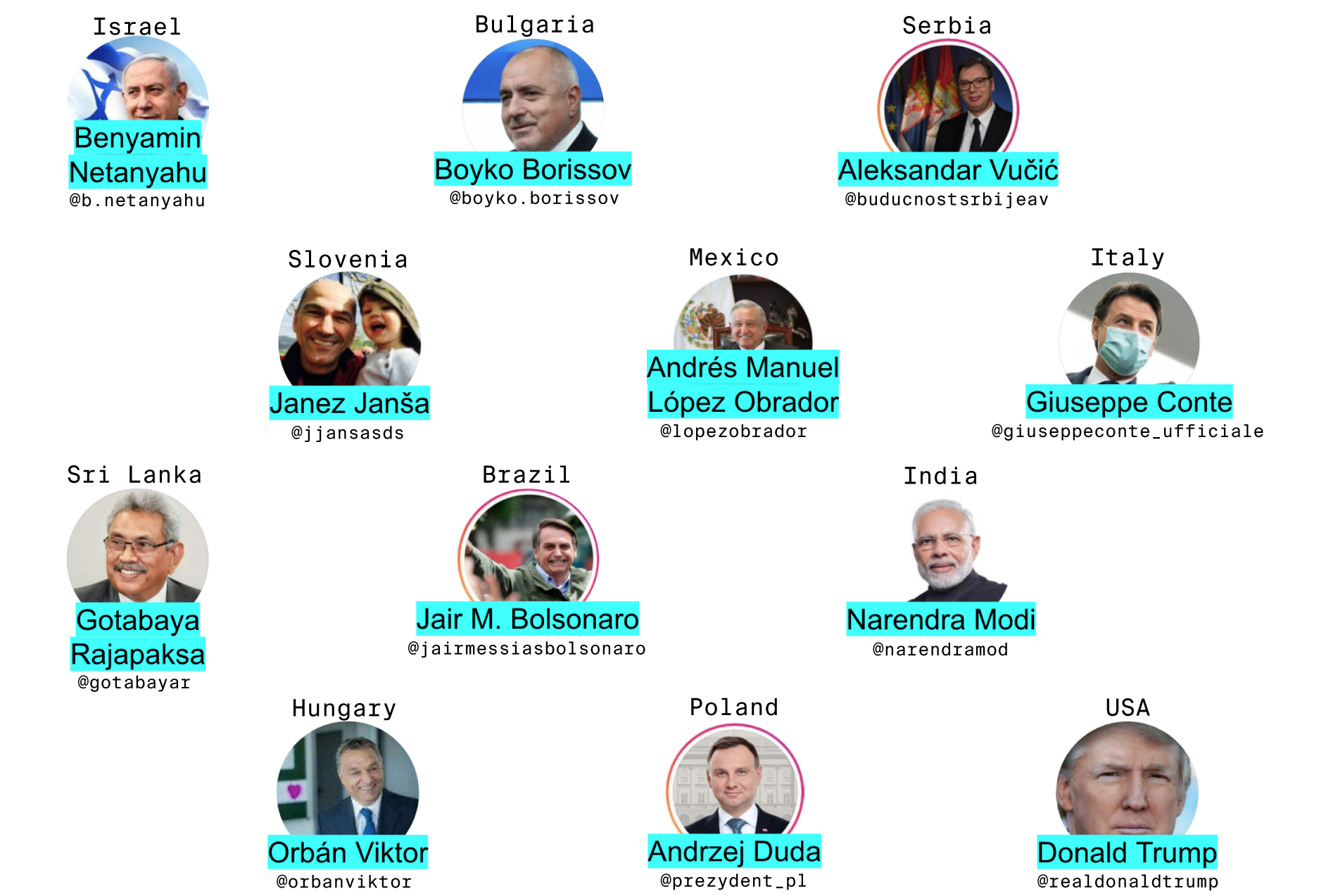
Figure 1. Overview – populist leaders, profiles, countries. Image Credit: Federico Meani
The methodological design of the current project is focused on combining different digital methods in order to explore the types of populism that result from the actions made by politicians as Instagram users within the “platform grammars” (Gerlitz & Rieder, 2018; Rieder, 2013). Our mixed approach of digital methods was composed of natural language processing (LDA) tools, used for textual content analysis; Python scripts to extract and quantify the usage of Instagram grammar; network analysis for mapping the relationships between profiles and the most frequent themes depicted in post images (vision tags networks).
While several studies analyze visual communication of specific political leaders (Strand & Schill, 2019; Lalancette & Raynauld, 2017) or some groups of politicians in a particular region (Ekman & Widholm, 2017), this investigation is sure to enrich the existing literature and research, producing insights on how populists gain and maintain their power on social media which they then transfer into gaining power in the real world. Besides, this research interacts with other initiatives already developed in the previous versions of the SMART Data Sprint. We start from the analytical logic proposed by Bitencourt (2021) and Bitencourt et al. (2021), then we combine procedures that have already been applied in previous research by Omena et al. (2022; 2020). Our analysis and results also echo other works that have already investigated the role of digital platforms as a political tool (Pilipets et al., 2021; Rosa et al., 2021; Machado et al., 2020).
- How do the affordances of the platform, the populist leaders as users and their audiences, build the populist narrative on Instagram?
- Is there any relationship between the topic of narratives, the pattern of Instagram grammars used and the quality of interactions in posts?
- If there is a relationship between topics, affordances and engagement, do these arrangements vary depending on the type of populism or is it possible to see a general pattern in the “populist” communication strategy on Instagram?
- If these patterns vary according to the specifics of each type of populism, how could they be characterized both in terms of the promoted content and in terms of the affordance strategy used?

Figure 2. Design Protocol. Image Credit: Elias Bitencourt, Federico Meani
Selection of the profiles and corpus description
The pool of populist political leaders was determined following the methodology of the Tony Blair Institute (Kyle & Meyer, 2020) and only democratic states were considered, in addition limiting the timeline to the year 2020. The final sample contains 3,388 Instagram posts (video IGTV and stories were not included in the data collection) from profiles of 12 populist political leaders in the same amount of countries, who were in power in 2020. Only the first picture in the carousel was chosen for the analysis with the use of PhantomBuster. Before proceeding with the data collection, an overview of how individual politicians appropriate Instagram was done with the help of Google Sheets. The average number of posts collected is circa 282, with a considerable standard deviation of circa 243. Andrés Manuel López Obrador, the Mexican leader, has just 35 posts, while Aleksandar Vučić, the Serbian president, has 721 of them.
Each of the images was processed through Google Cloud Vision API (Omena, J. J. et al., 2021) and Microsoft Azure Computer Vision API with Memespector (Chao, 2021) in order to identify GV_Label_Descriptions, GV_Web_Entity_Descriptions, GV_Web_BestGuessLabels, MA_Tags and MA_Description_Captions, MA_Objects which were used for further analysis.
Data cleaning and enrichment
Starting from the original database, we performed some treatments in order to standardize the data, eliminate noise and extract new information for analysis. The steps followed the flow indicated below.
- We cleaned the database (there were some errors and misaligned columns) and parsed the date format to make it more readable in the analysis.
- We calculated the average interactions for each profile and classified the posts with “low interaction” (posts with values below the average of each leader) or “high interaction” (posts with values equal to or above the average of each politician).
- We identified the profile’s follower base in 2020 and calculated the engagement rate (ER). But some profiles were not accessible depending on the account type. So we decided to abandon this approach and use “interaction metrics” as the key engagement reference.
- We extracted all the grammatical entities from the posts – hashtags, emojis, mentioned users, tagged users in the photos and calculated their frequency in each post. So we could explore the usage patterns of Instagram grammars for each populist strategy.
- We extracted all the links mentioned in the posts and their respective domains, so we were able to get an idea of which platform the populists’ speech addresses more.
- We aggregated the information of the clusters (modularity) of Gephi, some labels of the Vision API (Google and MS), as well as the type of populism, countries of the leaders and their continents.
What are populists talking about?
In this part, we will investigate what populist leaders speak and share on social media. Building on the topic of detection of images and text descriptions of the Instagram posts of populist leaders as described in the previous sections, we will analyze similarities and differences between populist leaders in terms of the content they share on social media. The guiding questions in this section will be the following:
- Are there any recurring thematic patterns for each populist leader?
- Is it possible to identify similarities and contrasts between the themes most addressed by populists?
- What are the most represented themes in the images of the posts?
- Is it possible to find some general pattern in the photographs posted by the political profiles in the corpus?
Text topics analysis
Methodology: creating a LDA/Mallet model
- We translated the original posts using the google spreadsheets translation function.
- We used Python to clean up the texts, extract non-printing characters, hashtags, emojis, punctuation, tokenize and extract n-grams.
- We first ran Gensim’s LDA model (vanilla) which gave us 10 topics with the coherence coefficient of 0.38. LDA Gensim uses Variational Bayes sampling method which is faster but less accurate than Mallet’s Gibbs Sampling (McCallum, 2002).
- Next, we tested a second LDA Mallet version. We used the Elbow Method to find the optimal number of topics. In this approach, we select a range of possible number of topics (K) and apply K-Means clustering using the coherence coefficient of each topic (k). We plotted the number of topics and their respective coherence coefficients on a graph and then selected the number of topics with the highest coherence coefficient before the decline point. We chose to keep 14 topics as this would imply an increase in the model’s degree of coherence (0.39 in the LDA vs 0.49 in the Mallet version) and a more optimized number of topics.
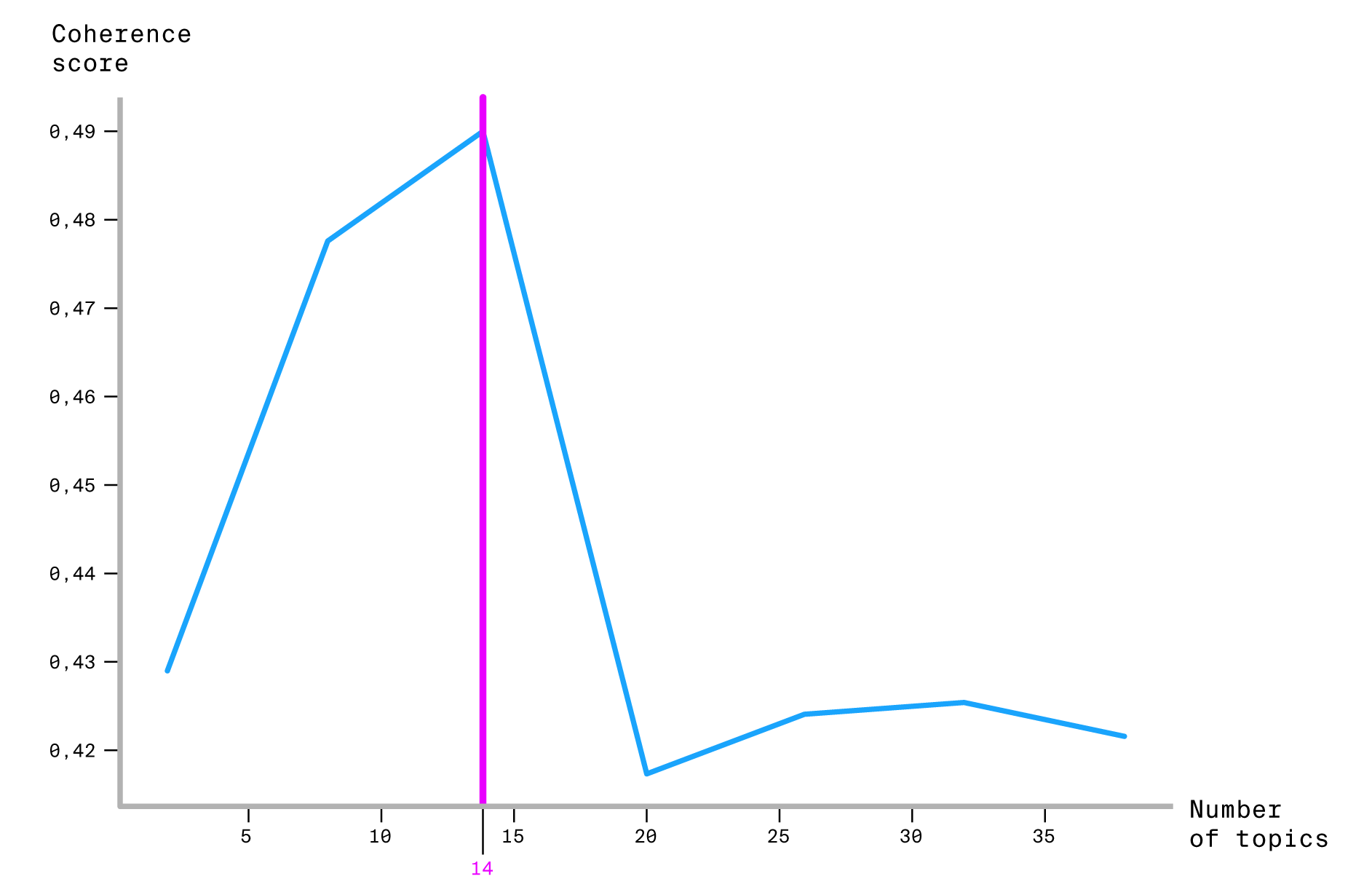
Figure 3. Number of topics and the coherence score. Source LDA Gensim (McCallum, 2002) Image Credit: Elias Bitencourt, Federico Meani
- We use the PyLDAvis module (Sievert and Shirley 2015) to visualize the clustering of topics from the LDA Mallet model. The bubbles represent the topics and their size refers to the number of posts on each topic. The closer, the more similarities and elements in common. The further away, the more contrasts in regards to the terms that occur.

Figure 4. PyLDAvis module: post text topic distribution. Image Credit: Elias Bitencourt, Federico Meani
- Finally, we aggregated the information from the LDA Mallet (dominant topic, and topic keywords) in the original base. We filtered the posts by topics and then created 14 subcorpuses to optimize the manual coding process (reading and labeling the topics).
- The posts were analyzed and classified manually by pairs and discussed collectively. In the end, titles were generated to facilitate the identification of the most characteristic themes of each topic. Later, we use Python to aggregate the topic labels to our main dataset.
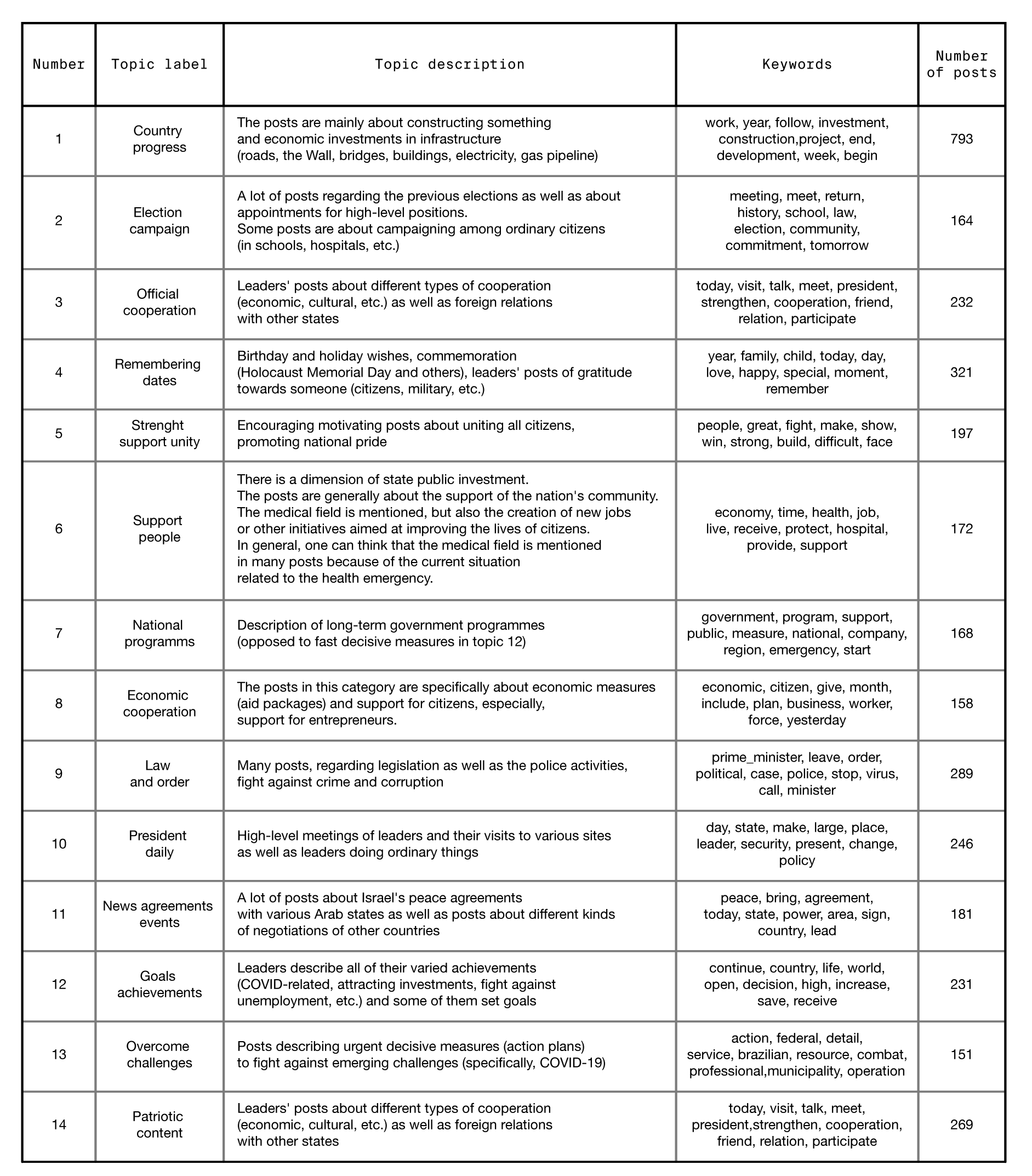 Table 1: Topic description and defined topic clusters. Image Credit: Federico Meani
Table 1: Topic description and defined topic clusters. Image Credit: Federico Meani
Link to LDA codebook table
Our approach to answering the question “what are populist leaders talking about?” builds on the LDA model described in the previous section. As our corpus consists of texts written in multiple languages, we chose to use this natural language processing (NLP) technique only as an initial strategy to guide manual content analysis. After identifying 14 topics, we performed the analysis in two stages. In the first one, we distributed the topic posts among the Smart Sprint participants and did the focused coding of the posts. In the end, we assign labels to each topic. At the second level, we grouped the 14 labels into 3 broader clusters. This layered analysis strategy allowed us to explore the hottest topics at both the most general levels (What are they talking about?) and the more granular perspectives (which populist leaders have similar topic selection patterns). Finally, we will note remarks about similarities and differences between populists, according to the analysis, before we continue with our further interpretations in the discussion part of the report.
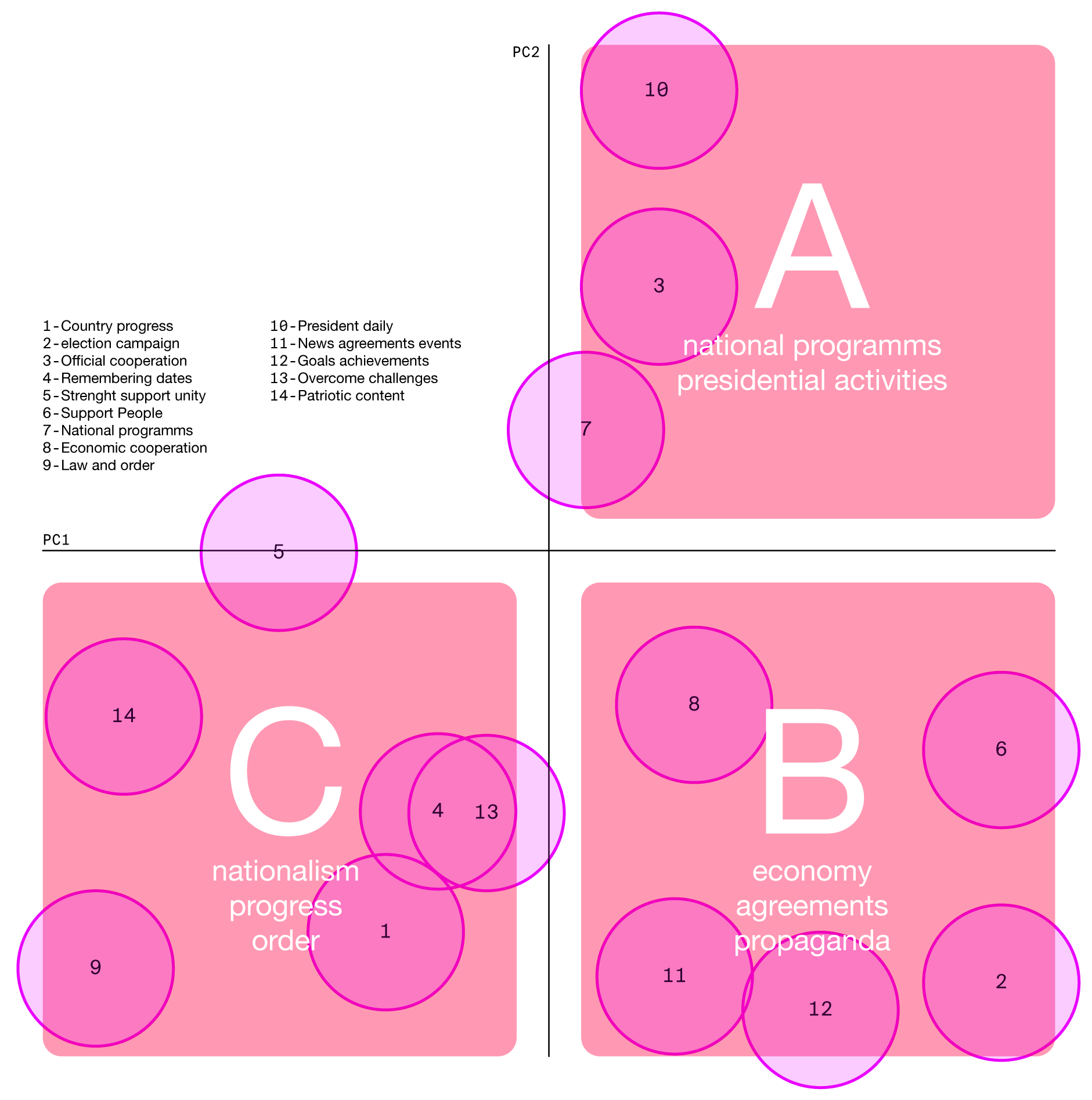
Figure 5. Distribution of post text topics by quadrant. Image Credit: Elias Bitencourt, Federico Meani
Analyzing the distribution of topics by quadrant, we found that there is a predominant thematic relationship for each region of the graph. In the lower-left quadrant are the posts that talk about “patriotic content”, “law and order”, “country progress”, “overcome challenges”, “remembering dates” and “strength support unity”. Grouped together, we can observe that these posts have common narratives marked by the discourse of valuing the force of law and order as a path to progress and the promotion of nationalist values.
In the lower right quadrant, there are posts whose content is more focused on “economic cooperation”, “supporting people”, “goals and achievements”, “agreements and events” and “elections and campaigning”. In general, they are posts that praise the achievements of the leader, that promote programs of financial support to the population, value the achievements of the government or highlight electoral events (such as public speeches, visits to spaces, meetings with other leaders and political agreements for elections).
In the upper right quadrant are located the posts oriented to the president’s daily activities, the cooperation agreements and the national programs developed. In particular, this quadrant highlights narratives that focus on government and leader self-promotion.
Combining automated and manual analysis of the contents helped us to verify that, within the general corpus, populist narratives are structured in three main clusters: 1) Nationalism, order and progress (quadrant C); 2) Economy and electoral campaign (quadrant B) and 3) Self-promotion (quadrant A). Among these cluster topics, the posts about nationalist speeches and posts with an economic and electoral focus account for 88% of the 3572 posts analyzed.

Figure 6. post textual topics distribution per profile. Image Credit: Elias Bitencourt
This leads us to state that, within the scope of our corpus, populist narratives were predominantly marked by a) nationalist discourses with a strong inclination to value law and order as a path to progress (63%), b) promotion of economic agreements and possible improvements for the country’s economy and c) electoral propaganda. Given the temporal cut of the corpus, there are posts that date from periods in which some leaders were running in the elections (such as former US President Donald Trump). This fact may have contributed to the presence of speeches associated with campaign marketing (such as Donald Trump). However, it is also worth mentioning that many other candidates maintained this “electoral campaign posture”, even after being elected (as is the case of Brazilian President Jair Messias Bolsonaro elected in 2018).

Figure 7. post textual topics cluster distribution per populist leader. Image Credit: Elias Bitencourt
Looking at a more granular perspective, we can see that the leaders Bolsonaro (Brazil), Giuseppe Conte (Italy) and Lópaez Obrador (Mexico) are the ones who proportionally post more about economic agreements and use election campaign speeches. In contrast, the leaders Aleksandar Vučić (Serbia), Netanyahu (Israel) and López Obrador (Mexico) are the ones that proportionally make more use of narratives associated with the government’s self-promotion and the leader’s daily agenda. Even knowing that the narrative based on nationalism, order and progress is the most prominent in the corpus – which also reflects at the individual level of the publications each populist profile – we observed that this conservative theme has a greater proportion in the posts of former President Donald Trump (USA), Prime Ministers Orbán Viktor (Hungary) and Janez Jansa (Slovenia).
Limitations of topic analysis
- We are working with automatic translations from different languages and this affects the reliability of the model. For this reason, the topics were only used as a guide for manual analysis.
- We had a limited number of posts whose lexical structure is also rather heterogeneous (there are posts without text or posts that were left without the text in the model because they only contained emojis and hashtags that were removed for the analysis). This brings us some limitations in terms of the model’s coherence coefficient.
- It is important to remember that we are using LDA methods (originally builded for written language) applied on Instagram posts analysis. So, we cannot generalize the Populist leaders’ lexical structures found in this research to other types of content in other digital platforms.
Analysis of populists in terms of descriptions
Having completed our topical categorization of descriptive texts of the populist’s posts, we aim in this section to analyze the relations between the populists in terms of these categories. However, we immediately encounter a problem, due to the imbalances in our dataset. As mentioned, some leaders are more active on social media than others. However, this disparity can result in inaccurate calculations. Namely, it can lead to incorrect close ties between populists whose sample size is bigger. The sheer amount of their online activity can mean that they could have more posts associated with topics that they do not particularly invest in compared to another populist who posts less but has a tendency to emphasize the said topics.
Our initial experimentation proved that without any checks the people with the most data simply associate with each other. However, our goal in this part is to calculate how often populist leaders post about a particular topic(s) irrespective of how much they use social media and who are similar or dissimilar based on this information. Thus, this question necessitates normalization to nullify the differences in sample sizes.
After experimentation with various normalization techniques, we decided to normalize the posts for each topic in terms of percentages based on each leader using Python library pandas and visualized them using RAWGraphs as follows:
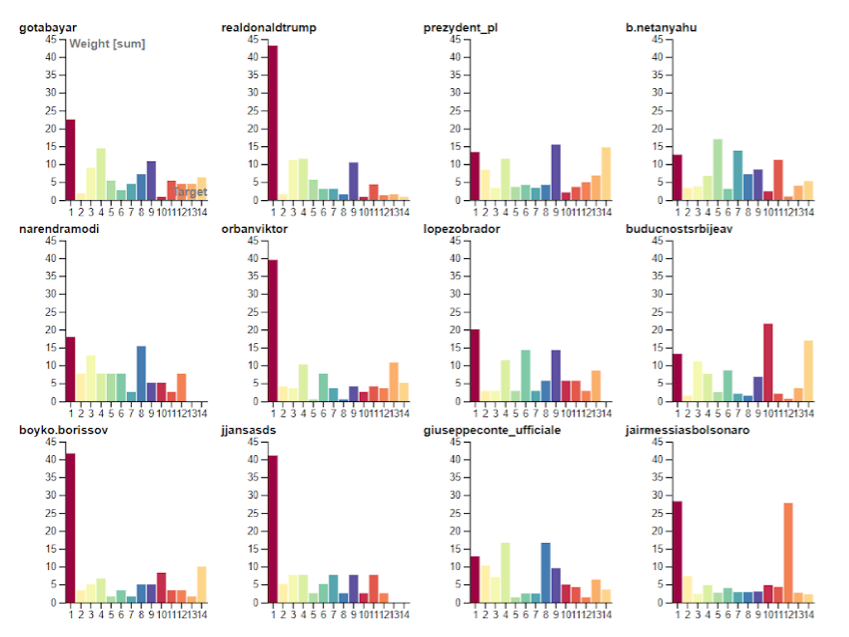
Figure 8. post textual topics distribution per populist leader. Tool: RAWGraphs. Image Credit: Sercan Kiyak
In the bar charts, the x-axis shows the topics (numbered 1-14, see the previous section for the description of each topic), and the y-axis of the graph shows the percentage of posts in that topic for a given leader.
After the preliminary observations through the bar charts, we transferred our data to Gephi to generate a two-mode network (figure 9) using the normalized data as an edge table and a .csv of topics and leaders as the node table.
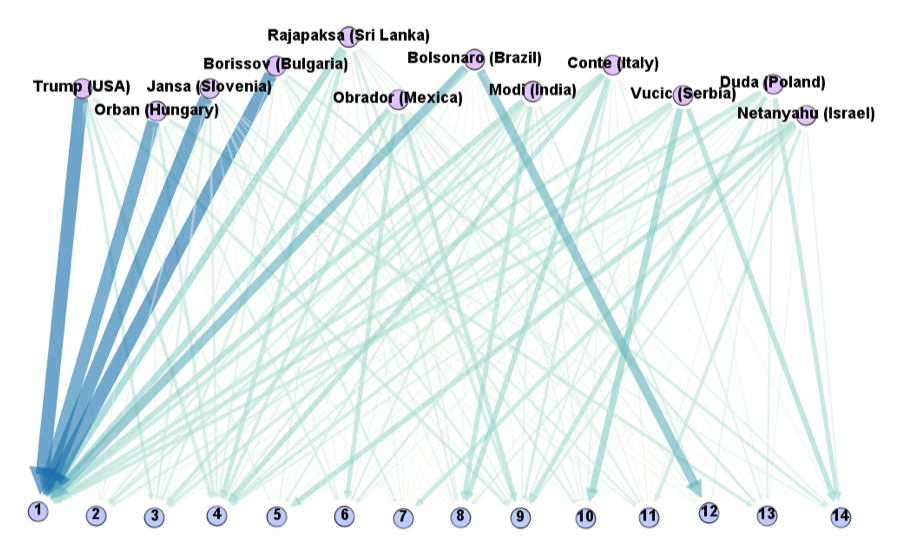
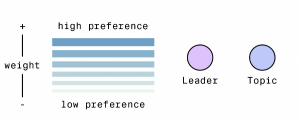 Figure 9. The bipartite network of populist leaders, topics and their relations. Tool: Gephi. Image Credit: Sercan Kiyak, Federico Meani
Figure 9. The bipartite network of populist leaders, topics and their relations. Tool: Gephi. Image Credit: Sercan Kiyak, Federico Meani
To make relations more visible, we then choose to project the generated bipartite network to a monopartite one (based on the leaders) using the “MultiMode Networks Projection” plugin for Gephi. Thus in the end, we generated the graph (figure 10) by using the Circular layout algorithm in Gephi:
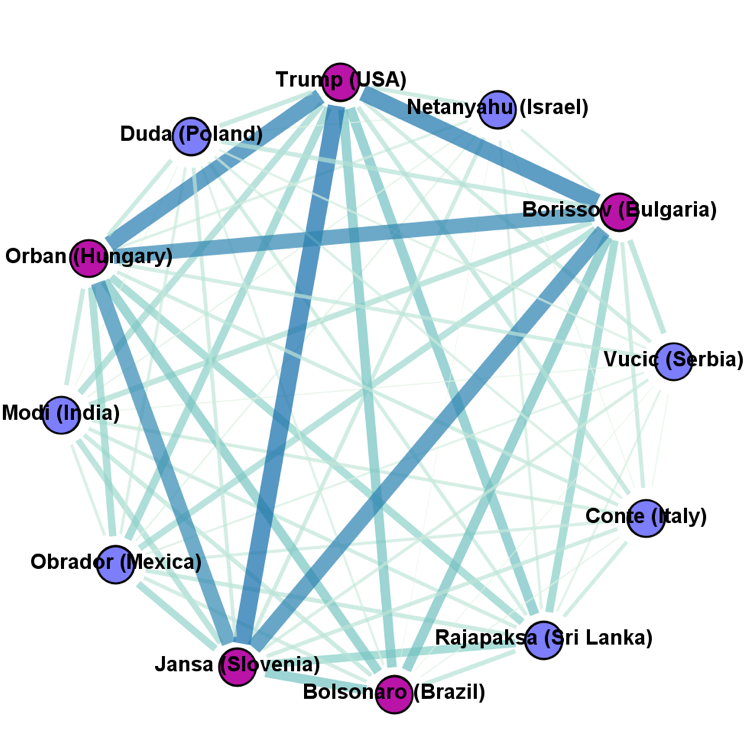
 Figure 10. The projected monopartite network of similarities between populist leaders according to the text topics. Tool: Gephi. Image Credit: Sercan Kiyak, Federico Meani
Figure 10. The projected monopartite network of similarities between populist leaders according to the text topics. Tool: Gephi. Image Credit: Sercan Kiyak, Federico Meani
In the graph above: 1) The thickness and color of the ties show the weights. Here the weights indicate a similar pattern of topic selection. It should also be noted that the graph algorithm emphasizes the weights instead of the topography to represent the relations. 2) The color is assigned to each node based on Gephi’s modularity class (community detection) algorithm. Two communities were found using a resolution range of 0.86 to 0.98 (without randomization). In lower resolutions, the graph tends to be divided into a lot of communities very quickly and given the low number of nodes becomes hard to interpret at the subgraph level.
Analysis
Figures 8, 9 and 10 give us insights about topic selection patterns of the leaders. First, figure 9 shows clearly that topic number 1, which falls under category C (Nationalism, Progress, Order) and is titled “Country Progress” is the most preferred topic. Nevertheless, Vucic, Netanyahu, Duda and Conte go against the trend and emphasize another topic more than the first one. Moreover, Bolsonaro posts about his goal achievements (topic 12) as much as topic 1 (see figure 9). This pattern makes him somewhat related to the majority trend while sustaining a certain unique interest in terms of topics and use of keywords.
According to figure 10, we can observe attraction and repulsion between different populist leaders, regarding the topics they emphasize. While we plan to interpret these results further in the discussion part, we could already list two more findings, one related to the group with the strongest ties and another about the outliers in their topic selections.
The most substantial similarities are between Trump, Borissov, Orban, and Jansa, and the strong turquoise ties among them visually represent it. The reason for such strong ties is that our NLP task classifies around 40 percent of text descriptions of these leaders under topic 1 (“Country Progress”). As mentioned Bolsonaro also has strong pattern similarities with all four of them, and he is also detected to be part of their (purple coloured) community by Gephi. One-third of his texts fall under topic 1, just behind the above four. The rest of the leaders have a lesser connection to topic 1. This criteria seems to be the common factor they all share as the blue community. Thus, we are skeptical that blue community forms a real thematic group.
We can still focus on analyzing the individual differences between the leaders in the blue group. For example, we can highlight patterns in the topical preferences between individual leaders. Netanyahu seems to be the most unique in terms of his topic selections. His individual distribution of topics (see figure 9 and his bar chart in figure 8) is relatively equal, with his emphasis divided between various topics. Additionally, Vucic seems to be a close competitor for the most unique pattern of posts. However, his particularity comes from the fact that most of his posts are categorized under topic 10, which is related to the president’s daily activities. In other words, they both have weak ties to the other leaders in terms of their emphasized themes, however they diverge from others in different ways.
Analysis of populists in terms of images
In a former study using the same dataset, some topics were identified based on the labels of the images. They were recognised by interpreting the labels, zooming-in on the Gephi clusters and analyzing the pictures connected in groups according to the similarity of their labels as per the table below. Names were given after the content analysis of the clusters.
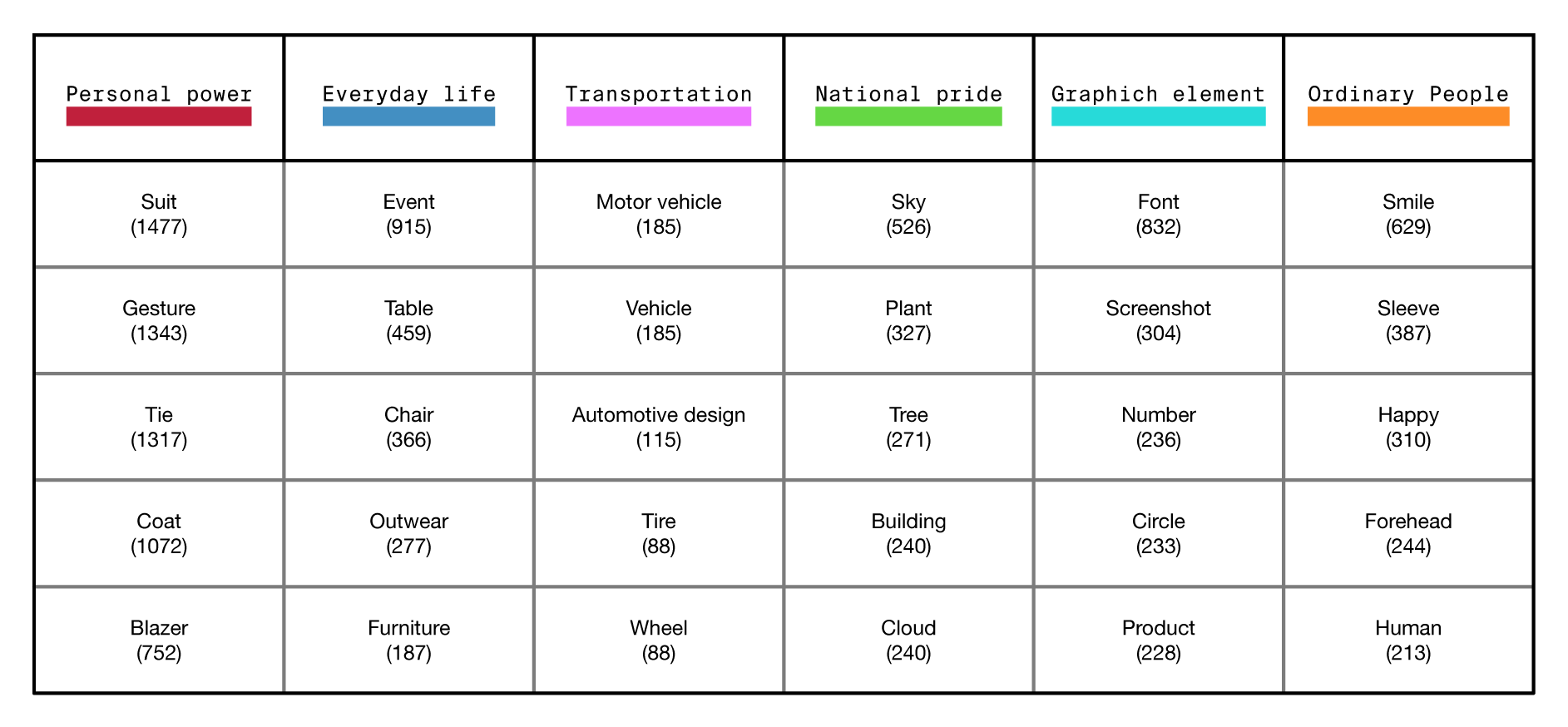
Table 2: Visual communication strategy: clusters and detected labels. Image Credit: Federico Meani
The personal power cluster shows official clothing, public events and serious ceremonies, while the everyday life one incorporates leisure activities, unofficial events and furniture, of home particularly. Transportation shows different transports, especially related to new infrastructures and the army. National pride presents national buildings, natural monuments and military clothing. The cluster of graphic elements, which generally present screenshots of Tweets and written texts in general, group some pictures that represent landscapes too (as noticeable in the treemap of Netanyahu on the most engaging picture and the one in the seaside with Modi). The ordinary people group contains family portraits of pictures of smiling and happy people.
12 treemaps were created based on the 10 posts with the highest interactions of each politician. Each image of the treemaps is identified in accordance with the image topics defined based on the labels and the text topics indicated by the LDA.
Analysis
Comparing the Gephi cluster of politicians with a more frequent higher engagement rate, there are no themes that distinguish them from the others. The lack of a noticeable pattern could imply that there is simply no perfect recipe for approaching communication on Instagram in terms of topic management of images or composition. Rather, each leader represents a case in point, where the profile’s effectiveness depends strongly on the situation in which it operates.
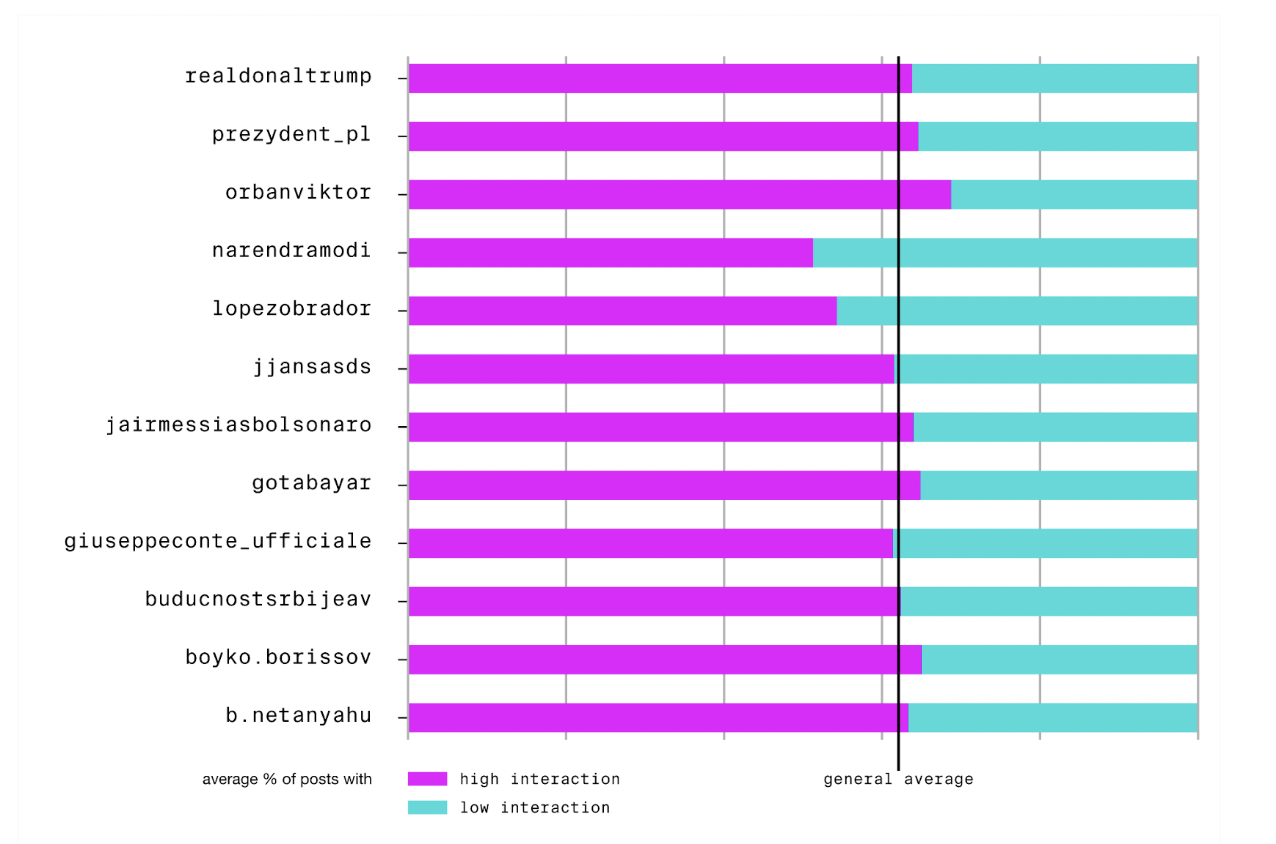
Figure 11. percentage of posts with a high and a low interaction, considering the average interaction. Tool: RAWGraphs. Image Credit: Federico Meani
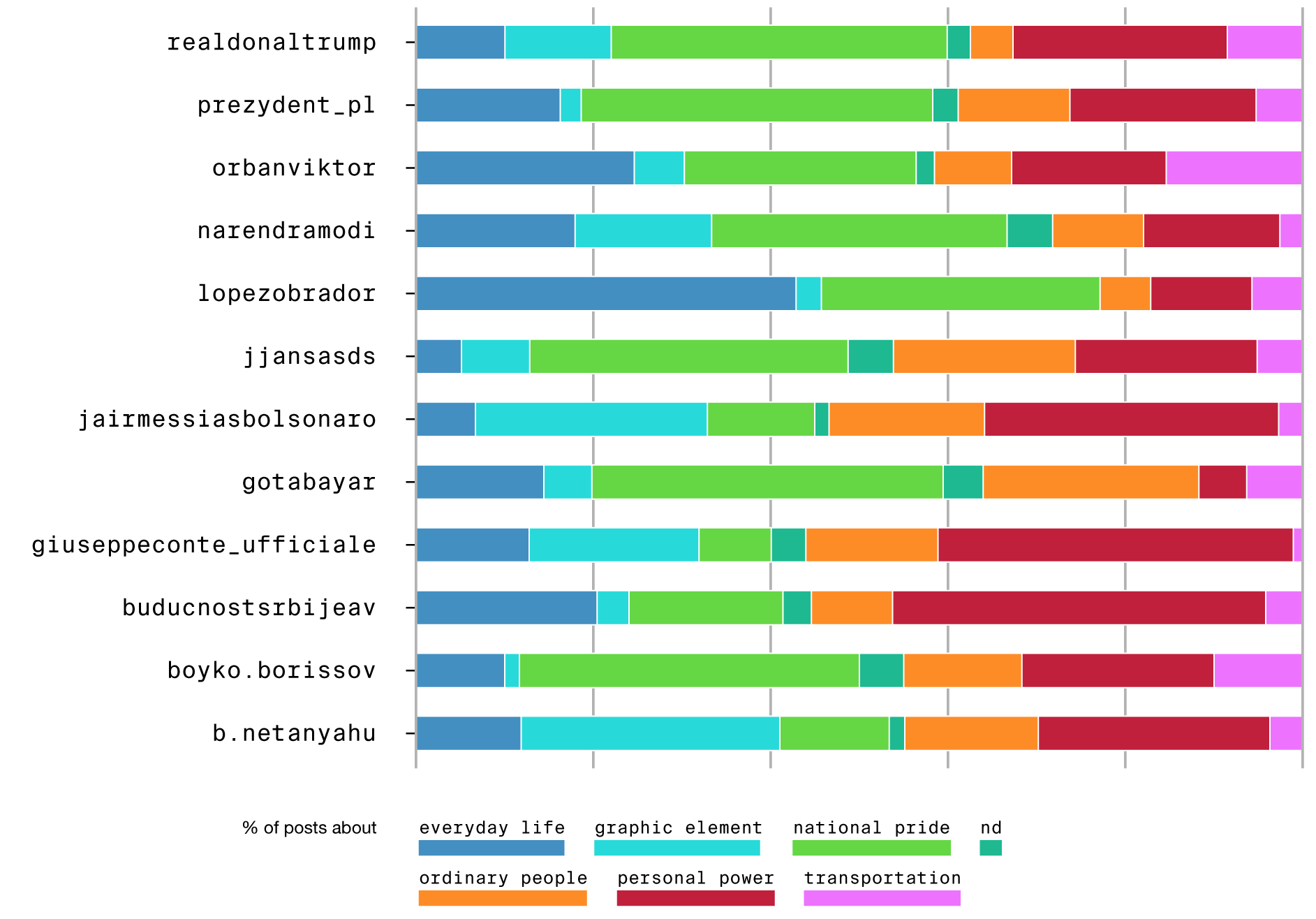
Figure 12. Post image topics distribution per populist leader. Tool: RAWGraphs. Image Credit: Federico Meani
For the vast majority of the leaders, the image with the highest engagement is the one with the politician himself in it. Trump, Conte and Netanyahu (figure 12) are exceptions, with the most engaging photos being those that do not portray them, while many other of their photos do. These photos, targeted very differently by image and text topics, are one of an African-American former police officer that was killed on a Facebook live (David Dorn), of a famous actor that died in 2020 (Gigi Proietti) and of the peace agreement between Israel and the UAE. All of them can justify a general appreciation of the population or at least interest in the topic.

Figure 13. Treemaps of Trump, Conte and Netanyahu.Tool: RAWGraphs. Image Credit: Federico Meani
Five politicians are present in all of their most engaging photos: Obrador, Modi, Jansa, Duda, Borissov. Moreover, some other politicians are present in the vast majority of them: Bolsonaro is in 9 of 10, Orban in 9 of 10, Vucic in 8 of 10, Netanyahu in 8 of 10. This could be explained due to ideas conveyed with the presence of the leader in the photo but also with the better performance that images with the photo of people have on IG (Bakhshi et al., 2014).
The themes detected by the analysis of the images and the analysis of the texts contribute to shaping a vision of the overall meaning of politicians’ posts. National pride is the main topic of these images, followed by Personal power and Everyday life. Remembering dates is the most common text topic of the most engaging picture of every politician, even if the overall distribution of text topics shows a clear prevalence of the theme of Country progress. This latter theme is not so frequent as in the general text analysis (fig.6), but is present on average on 2.5 pictures of the 10 of every politician.
You can find all the treemaps here.
Four politicians were analyzed more in-depth, representing different ways of appropriating their Instagram accounts. First sight of the themes detected by the clusters shows Bolsonaro as an outsider for the national pride used way less than his peers, and contrariwise, as a significant user of graphic elements (especially twits screenshots), and slightly higher user of personal power. While Trump is one with more posts with transportation pictures, Duda posts frequently pictures of his everyday life. Rajapaksa, on his side, is the one with the highest use of posts with ordinary people.

Figure 14. post textual topics cluster distribution per populist leader: Trump, Duda, Bolsonaro, Rajapaksa. Tool: RAWGraphs. Image Credit: Federico Meani
More specifically, for Jair Bolsonaro, there are different text and image topics among his posts with the most interactions. However, it is noticeable that with the use of Instagram he strives to convey his personal power and this type of content is popular among Instagram users. Moreover, on many of the posts with most interactions Bolsonaro himself is depicted: such photos look amateur, the reason for it could be to look like an ordinary citizen, “as a mirror of the people” (Mendonça & Caetano, 2021). On the other hand, in some pictures, he looks like an extraordinary man, like a distant head of the government. This contradiction was already noticed by Mendonça and Caetano (2021) when they analyzed Bolsonaro’s posts in previous years and this strategy has been identified for 2020 as well.

Figure 15. Bolsonaro treemap. Tool: RAWGraphs. Image Credit: Federico Meani
As for Donald Trump, his most interactive publications for 2020 include mostly those devoted to national pride as an image topic and remembering dates and the country’s progress for the textual content of the posts. This corresponds to the strategy of attracting people’s attention to important events and individuals as well as to Donald Trump himself. The majority of his most interactive posts include professional, press photographs and show Mr Trump as the leader of the country.

Figure 16. Trump treemap. Tool: RAWGraphs. Image Credit: Federico Meani
Andrzej Duda used Instagram in 2020 as a tool for his election campaign and election posts were popular among Instagram users. Usually, these posts were devoted to showing his personal power or to displaying national pride as those were the two pillars of his re-election campaign. All of the photos are rather professional. In addition, in many popular images of 2020, the first lady of Poland, Agata Kornhauser-Duda, is portrayed alongside her husband.
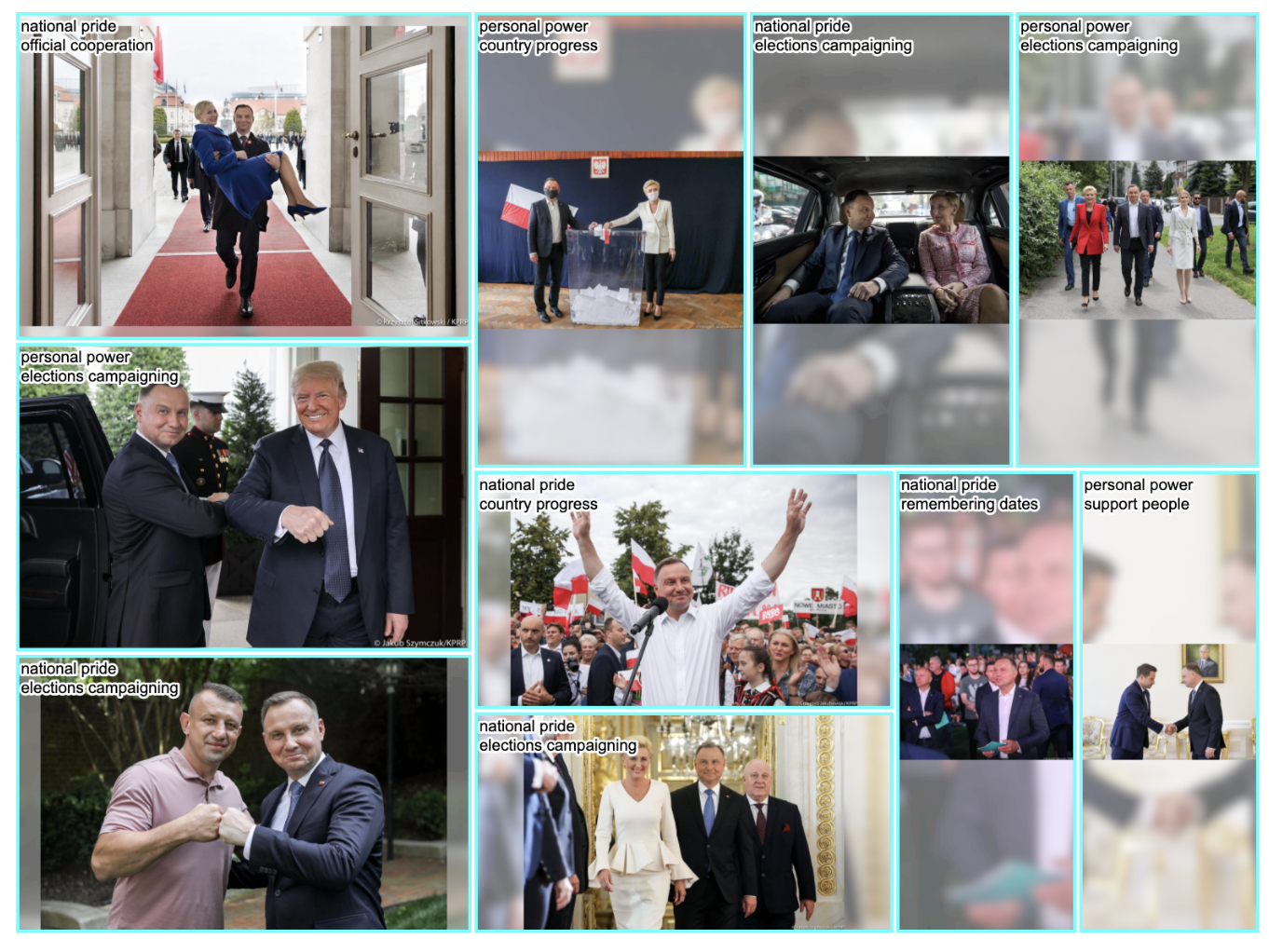
Figure 17. Duda treemap. Tool: RAWGraphs. Image Credit: Federico Meani
Among the most interactive posts of Gotabaya Rajapaksa from 2020, there are mostly photos visually devoted to national pride with various textual content in the post section. Moreover, there are many other people in the pictures with the leader, behaviour which could be explained by the will of attracting followers by taking pictures with other famous and important people. His family is frequently present in the pictures, especially his son, Manoj Rajapaksa, and his wife Ioma Rajapaksa.
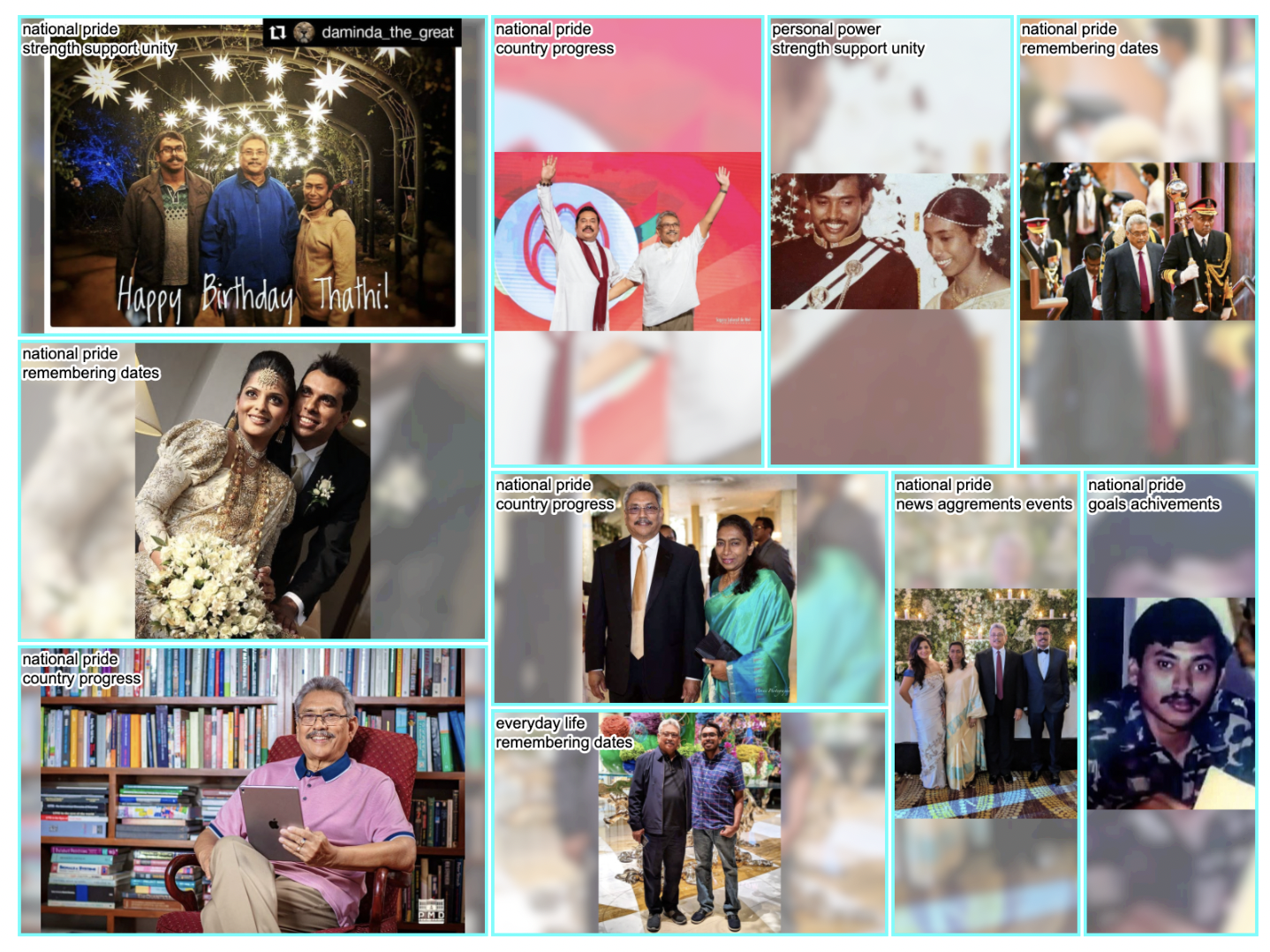
Figure 18. Rajapaksa treemap. Tool: RAWGraphs. Image Credit: Federico Meani
How do populists use Instagram grammar to support their messages?
Besides text and images, Instagram offers several affordances to strategically circulate posts, namely the use of emoji, hashtags #, mentions @ and profile tagging @. In this part, we will explore how populist leaders appropriate these types of Instagram grammar and how this can reveal differences in the communication strategies used, before connecting all the dots with regard to the results of the analysis above to complete the picture of their narrative. In order to do so, we oriented our analysis on the following questions:
- Which grammar does every politician use? Is there a common pattern amongst them?
- How are the elements mentioned above applied? With what frequency and intensity?
- Whom or what do they connect to their profile and posts by using which types of grammar?
Methodology
As the first step, due to the imbalance of extracted posts per leader, we calculated the average usage of each of these entities in the dataset and classified them as “high, regular, and no usage” for each of them. We used the range between the mean and the standard deviation of each entity in the corpus to classify them as “regular usage”. The values that were above the standard deviation were labeled “high usage”. This process allowed us to see the intensity and frequency of use across the populist leaders.

Figure 19. Frequency of use of specific instagram grammar. Tool: RAWGraphs. Image Credit: Federico Meani
Figure 19 shows what percentage of their posts were contemplated with each affordance (emoji, hashtags, mentions, profile tagging). The pink color indicates high usage in a post, blue average and gray if not used.
As we observed that mentions (mention tags in the caption) and profiles tagging in the image seem to particularize some candidates, we decided to group all the cited profiles (mentioned and tagged) and analyze their tagging activity on Instagram. To do so, a bipartite, directed Gephi network was built using the imageID (here equivalent to the post) and the tagged profiles. Since the tagging is based on the contributions to the profiles mentioned, the size of the profile nodes was ranked according to the degree of integer, however, a linear spline was used to configure the rank interpolation. After applying the algorithm Force Atlas 2 to spatially group the profiles mentioned in common, the whole network was projected in a monopartite network using the plugin MultiMode Networks Transformation. In the end, Fruchterman Reingold, which is also force-directed but keeps a symmetrical shape, was used for better visualization.
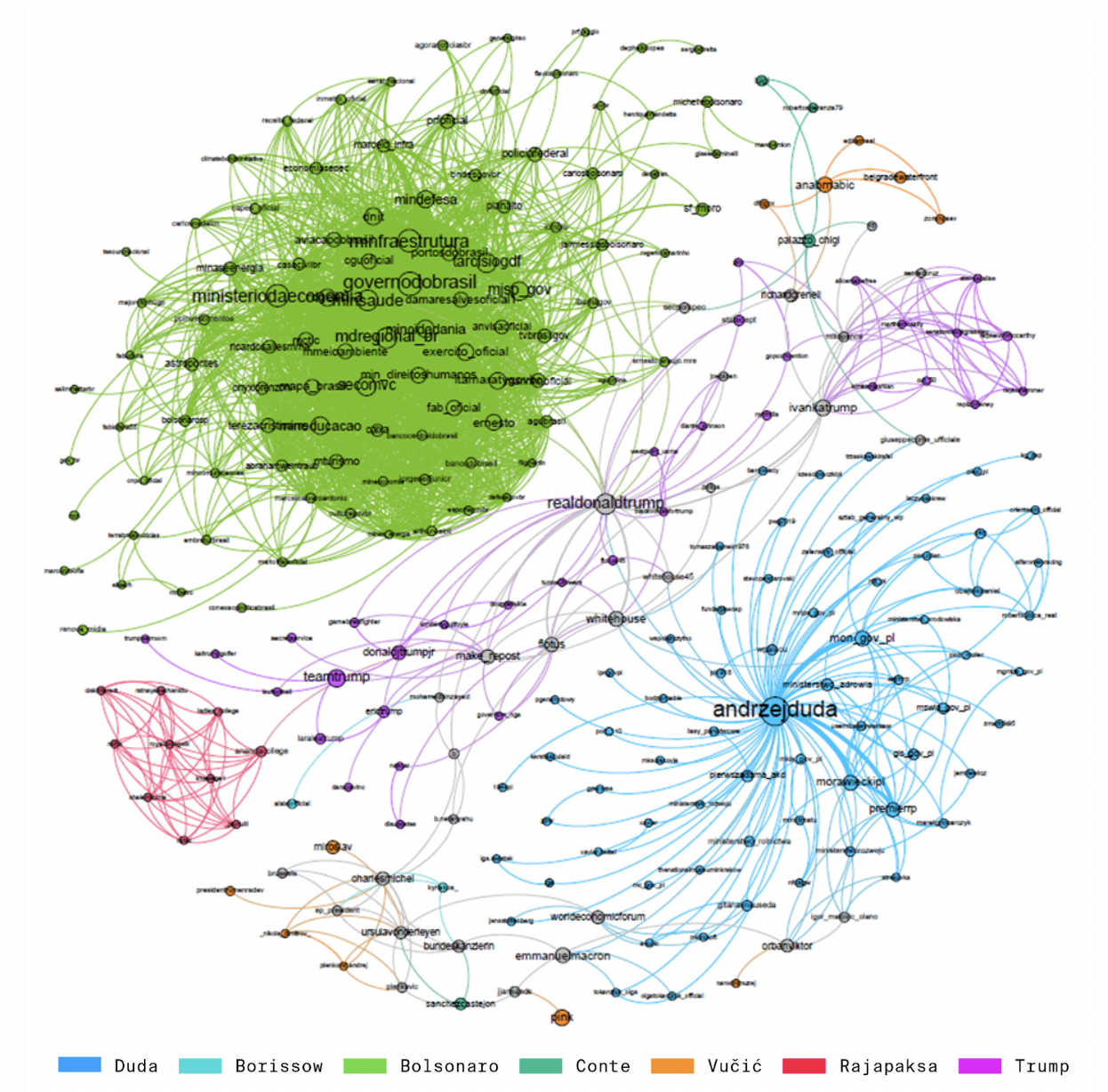
Figure 20. Tagging network of the 12 populist leaders. Tool: Gephi. Image Credit: Franziska Schranz, Fabio Castro Gouveia
This process resulted in a projected profile network, as shown in figure 20, in which the profiles that were tagged in the same post are directly connected. Posts and tag combinations in the periphery with no connection to the main network are filtered out through this approach and allow a better overview of the center. The coloring is based on the profiles of the 12 leaders assigned as attributes. Gray nodes are profiles that were tagged by more than one political leader.
Based on this Graph, we observed the tagging strategy of the 12 populists and how they relate to each other. We honed in on three dominant tagging users: Donald Trump, Jair Bolsonaro and Andrzej Duda to explore their tagging patterns on Instagram and identify their strategies for platform reach and social network in Instagram. The network data described in figure 20 was used as input to produce three ego networks. Each populist leader was manually selected as an ego in the network (Jair Bolsonaro: starting node = governodobrasil; Donald Trump: starting node = realdonaldtrump; Andrzej Duda: starting node = andrzejduda) and non-connected nodes were filtered out in Gephi. Each network was visualized using a Force Atlas 2 algorithm applied to the collapsed networked data in order to visualize profile nodes linked by tags in posts with a limit of two degrees of separation between profiles (second depth in Gephi’s configuration). The size of the profile node was again determined by the in-degree (frequency with which this profile was mentioned in posts) and we repeated coloring attributes to maintain consistency with figure 20.
Analysis
Through the analysis of the Instagram grammars (interface affordances) we found that there is a clear gap between profiles that make extensive use of the component and those that do not. A clear example of this is the case of emoji, where the three profiles with the highest use of this component (@prezydent_pl, @jjansasds and @giuseppeconte_ufficiale) clearly stood out from the others. It is interesting to note that highlighting, for each grammar item, the four profiles with the greatest use of the item, these seem to be equally distributed, there is no single profile that makes massive use of all the elements indiscriminately, but rather each leader has its own grammar pattern.
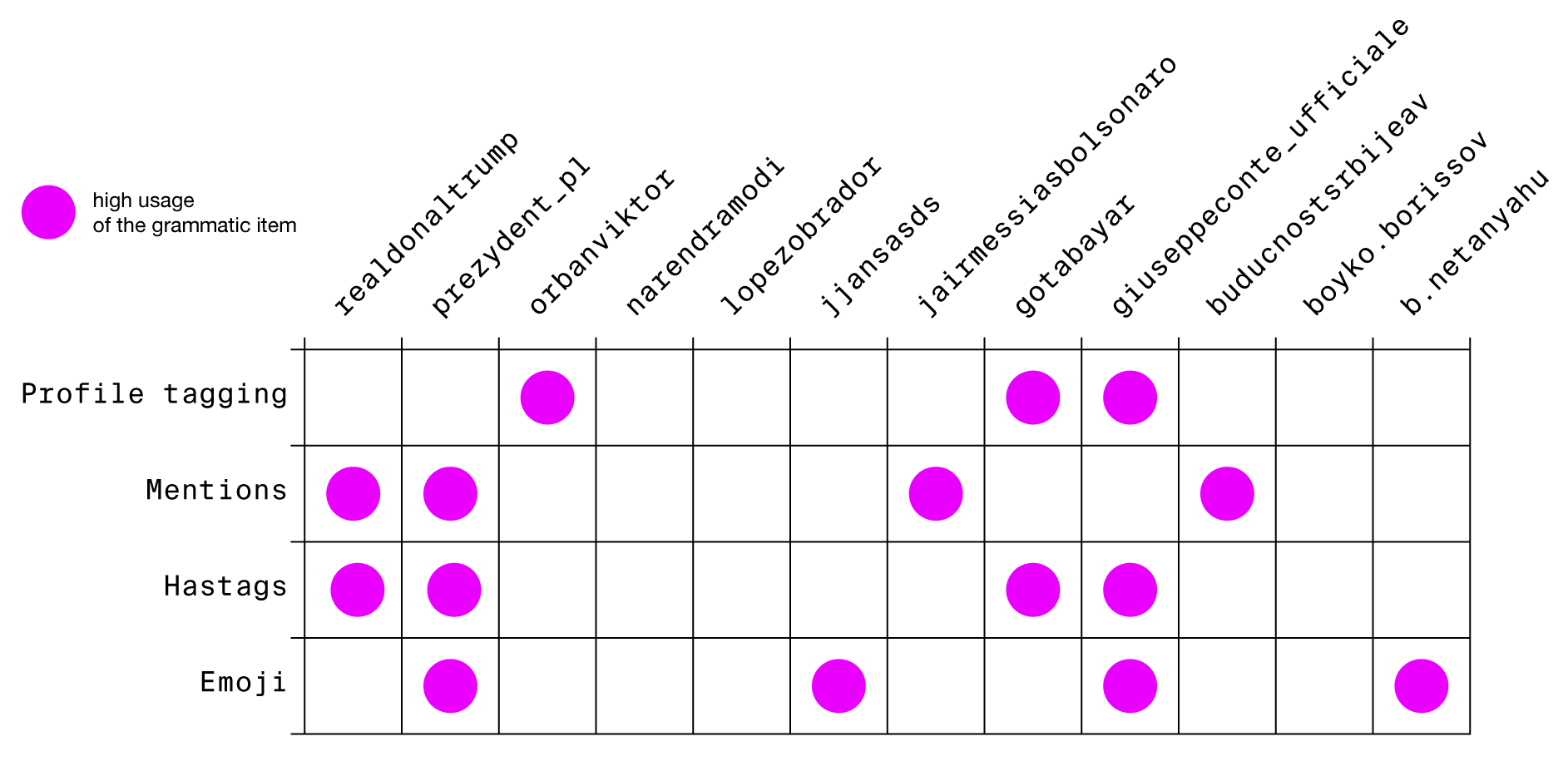
Figure 21. Populist leaders’ grammar usage patterns. Image Credit: Federico Meani
We can see, for example, that Rajapaksa (gotabayar) uses hashtags in almost all his posts with high intensity, while Duda (prezydent_pl) uses all four affordances in almost 50% of his posts, but with regular intensity. Trump (realdonaltrump) on the other hand, focuses on the use of specific elements, in this case mentions and hashtags, and uses it in a more moderate but targeted way.
Focusing on the grammar of profile tagging and mentions allowed us to investigate more closely the connection strategy of each politician and put them in relation. The three dominant authors, Jair Bolsonaro, Donald Trump and Andrzej Duda, have a very different tagging network. While Bolsonaro’s network is so densely connected that it appears like a ball, Trump’s network is determined by smaller tag groupings and Duda’s is like a star, where all tags are connected to one centragen account. Bolsonaro and Duda are opposite each other while Trump is in the middle of the network. His account @realdonaldtrump was tagged by half of the politicians studied here (Aleksandar Vučić, Benjamin Netanyahu, Boyko Borissov, Jair M. Bolsonaro, Narendra Modi, Andrzej Duda). He seems to be used as a booster for the other political leaders, also those who perform little tagging. Another group worth mentioning are Aleksandar Vučić, Boyko Borissov and Giuseppe Conte. These three seem to follow the strategy to increase their Instagram visibility by connecting themselves to other politicians such as the President of the European Council (@charlesmichel), the President of the European Commission (@ursulavonderleyen) or the French President (@emanuelmacron). This shows that the tagging networks of European leaders overlap, but they are not connected to the Asian or South American leaders – the only connecting factor is the mention of Trump.
Furthermore, through the analysis of the three ego networks (Donald Trump’s (figure 22), Jair Bolsonaro’s (figure 23) and Andrzej Duda’s (figure 24)) we identified different strategies emerging from the tagging behavior of these leaders:
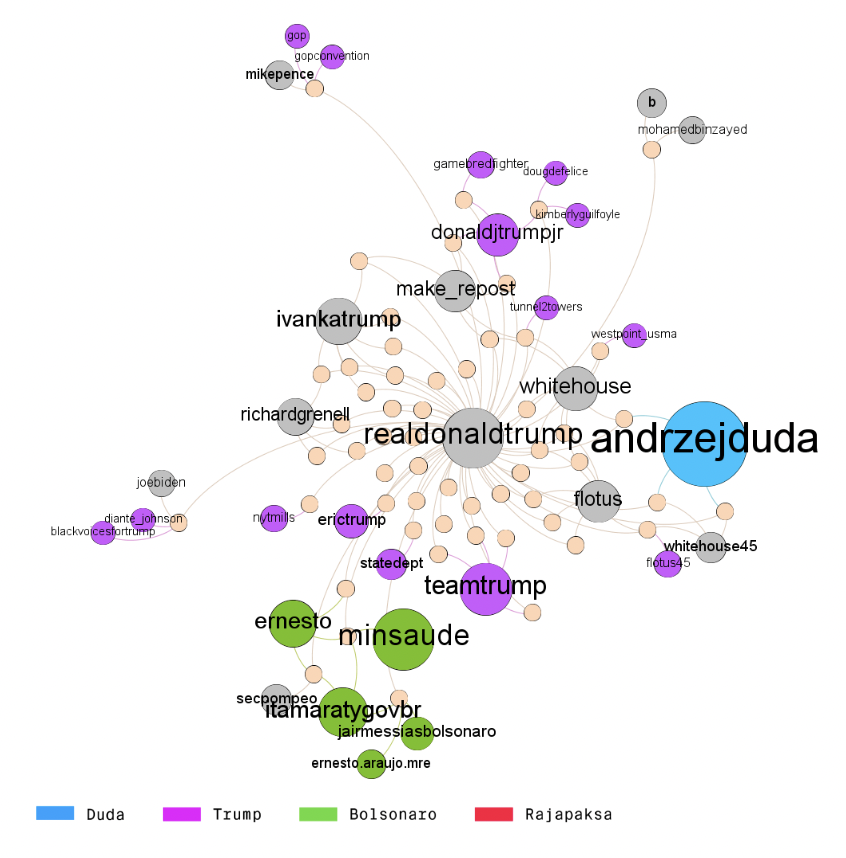
Figure 22. Donald Trump tagging ego network. Tool: Gephi. Image Credit: Eduardo Rojas-Padilla, Franziska Schranz
Donald Trump displays a more canonically centralized structure of an ego network in social network literature, with close associates surrounding the ego node plus an added layer of foreign leaders. The more striking feature of this strategy is that official accounts from USA’s institutions are not the core of the network. The control of his engagement is mediated through persons closer to Trump’s figure rather than to the institutionality of his Office. Rather, Donald Trump’s political network consists mostly of his family, his camping team and known associates. These types of topographies are more commonly found in corporate and business networks than in world leaders, however, Trump’s pattern use of tagging suggests a close circle of personal associates mediating the online strategy in Instagram of his presidential figure. Moreover, peripheral nodes from other populist leaders including Duda and Bolsonaro, also seek to move closer to Donald Trump in the global network through tagging.
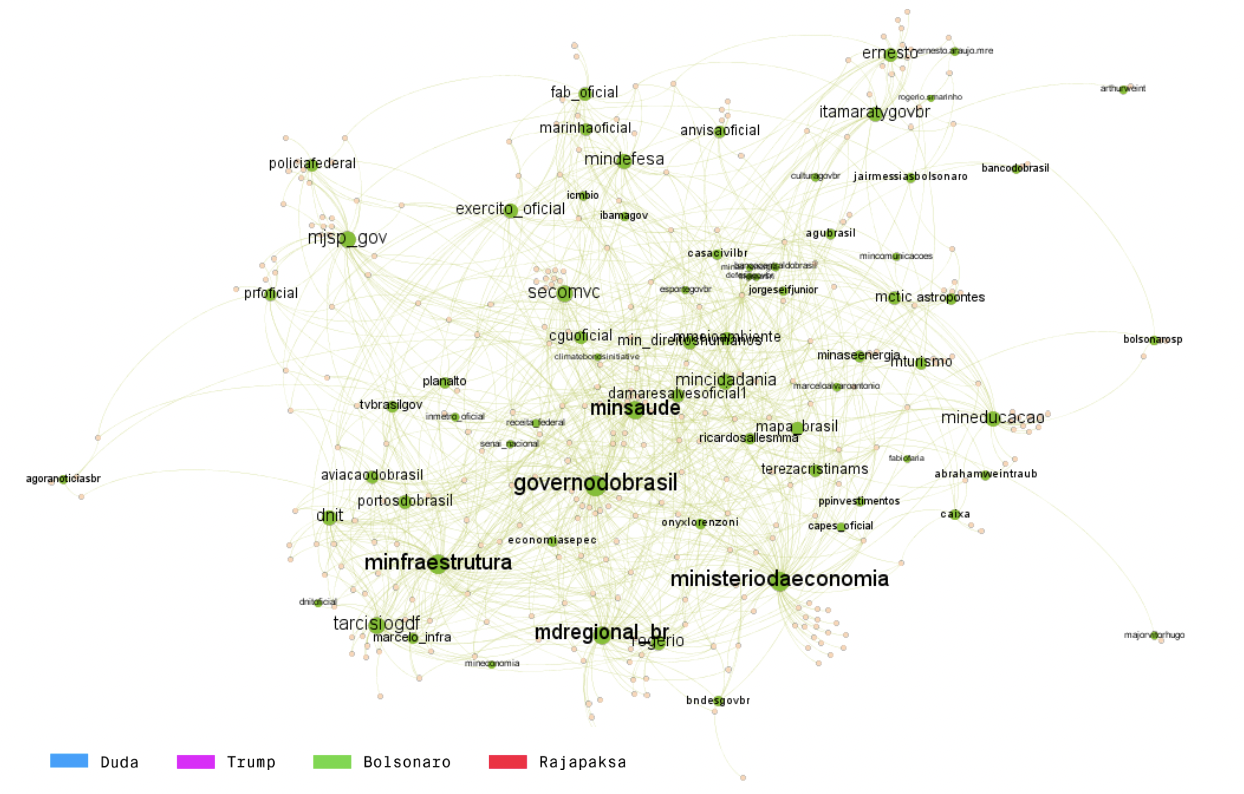
Figure 23. Jair Bolsonaro tagging ego network. Tool: Gephi. Image Credit: Eduardo Rojas-Padilla, Franziska Schranz
Conversely to Trump’s network, Bolsonaro’s ego network (Figure 23) has more references to a structural network through official institutional profiles, ministers, deputies and religious leaders. The positionality of Bolsonaro’s profile is practically peripheral in the network. Notwithstanding, the relevance of his Instagram strategy relies on the centrality of both institutional accounts and popular representatives profiles.
Unlike the other leaders, Bolsonaro’s strategy consists of tagging profiles that represent different facets of the groups supporting Bolsonarism (leaders of evangelical orientation, extreme-right groups, flat-earthers, agribusiness, arms lobby, entrepreneurs). His strategy, therefore, consists of mobilizing the largest number of profiles that allow it to amplify the reach of the posts, delivering them organically to the different ideological segments that support him (Gomes, 2019; Nascimento et al, 2021)

Figure 24. Andrzej Duda tagging ego network. Tool: Gephi. Image Credit: Eduardo Rojas-Padilla, Franziska Schranz
Finally, Andrzej Duda’s ego network follows the principles of engagement metrics and clout in social media. Duda’s activity on tagging in Instagram implemented a platform tactic of maximizing the use of tag and self-mentions, which is also corresponding to the adoption and use of Instagram in Polish politics (Molek-Kozakowska & Kampka, 2021). The use of tagging of European leaders and relevant domestic and European figures suggests that Duda’s strategy for his populist discourse is amplifying his own presence (and indirectly, relevance and legitimacy as a leader) in the line of other political leaders (populists included) in Europe and Donald Trump in the US. This logic follows the use of tagging and other affordances to increase reach and visibility in the platform.
These findings allowed us to detect similarities and differences amongst the leaders’ communication strategies. With regards to the topics addressed in the post caption, a similar pattern was shown by Trump, Borissov, Orban and Jansa for example, they all try to convey “national progress”. Such a strong overlap of themes could not be found among the rest of the populist leaders, only Bolsonaro slightly resembles these four. A similarity could also be found in the images they use. About 50% of their posted images convey “personal pride” and “national power”. Furthermore, Borissov and Bolsonaro not only lean on Trump in the topics of their posts but also try to make a connection by tagging Trump’s profile “@realdonaldtrump” in their posts. Associating the Instagram profile with Trump seems to be a strategy used by several populist leaders. 6 out of the 12 populist leaders did so.
One of the explanations of such a connection between these five leaders may be that they are ideologically close to each other, all of them being right-wing and naturally having the same rhetoric, and that defines the scope of their topics and messages, which they are trying to convey through their social media and Instagram. In addition, D. Trump may be the central figure in all of these relationships. Firstly, J. Jansa is often called a “Trump-like leader” as he resorts to methods that are similar to Trump’s, attributing all of the negative events happening in the country to the opposition and non-governmental organizations (Maksuti, 2021). He even tried to capitalize on Trump’s presidency to achieve better relations between the US and Slovenia (Kosec, 2020). Secondly, J. Bolsonaro stuck to the strategy, similar to the one of D. Trump, during his election campaign; he famously called Trump his “idol” and, when D. Trump was banned from Twitter, J. Bolsonaro even changed his profile photo to that of Trump’s (Winter, 2021). Thirdly, D. Trump and V. Orban publicly supported each other during the election campaigns and V. Orban is named as the leading European populist, aligned with Trump (Kakissis, 2020). Finally, D. Trump and B. Borissov issued a lengthy joint statement and improved relations between the US and Bulgaria (Hernandez, 2019).
Further, the results show that there is no common, but rather an individually specific appropriation of Instagram among the populists studied. However, there were three significant patterns that we could identify:
Bolsonaro, for example, mainly uses mentions and tags, which is reminiscent of organic growth. The communication strategy is characterized by linking posts to other user networks in order to reach the follower base associated with these networks. There is no key linked profile, but multiple ones, which means that several different institutional accounts and supporters form the core. This is also mirrored in the themes featured in his posts. “goal achievement” and “country progress” are his top topics to promote himself but also the whole Brazilian governing body and the leaders of his electoral basis. We then identified this strategy as organic populism because it seems to use organic post boosting tools (mentions and tagging) as the main strategy to achieve visibility on instagram. The word organic used to define this approach reinforces the diluted characteristic of this strategy, which consists of mobilizing multiple segments of society using the audience of the various profiles linked to the post as a targeting tool. In this context, “organic” should not be understood as synonymous with “non-sponsored” strategy.
“Hashtag Marketing Strategy Populism” (HSM), practiced by Donald Trump on Instagram, shows a minimalistic use of components. He mainly uses branded hashtags to refer to specific national events (e.g. #cincodemayo) to mention his family (e.g. @flotus) members and promote the American dream. This expression of patriotism is also shown in the image pattern, in which topics mainly fall within the national pride cluster, and the textual context, revolving strongly around remembering dates and the country’s progress. His most engaging posts show, for example, Trump commemorating those who fought for the USA on Veterans day, offering condolences for Kobe Brynt, a famous basketballer, or for David Dorn, a shot police captain, and underlines the esteem in which police officers should be held. However, in the majority of pictures we see the profile of Donald Trump in an official setting conveying personal power. The HSM Populism strategy, therefore, features the targeted use of hashtags and mention tags to leverage the platform’s recommendation system and attract followers by showcasing the magnificence of the country and its people and the strong leader at the center who upholds traditional values such as family, religion and cultural heritage.
“Click-Bait Populism” is detectable in the communication of Rajapaksa, the president of Sri Lanka, and Duda, the president of Poland. Similar to the HSM, this strategy follows the concept of extreme use of Instagram features to attract attention in a less directed way. This strategy aims to take advantage of the common sense idea about the platform’s recommendation system – The more grammars matched in the post, the greater the chances of being recommended by the algorithm and attract widespread attention. Rajapaksa, in this framework, is characterized by a spamming use of the hashtags, which is commonly known to boost interactions, even if it does not assure an organic growth of the profile. Duda, on the other hand, uses the Instagram grammar more broadly, with a self-mentioning strategy that comprehends hashtags, as well as mentions and tags. The intersection in their communication is therefore in the idea of the massive use of affordances to increase the distribution of their content and the suggestion of their profiles to others through Instagram’s algorithms. From the content perspective, both of them share topics related to law and order, as well as to the country’s progress. Duda is present in all of his most engaging photos, sometimes with other politicians such as Trump. Rajapaksa also posts images with his family and other politicians of the area.

Figure 25. Three types of populism observed. Image Credit: Elias Bitencourt, Federico Meani
As for future studies, this study can be enriched in two ways: 1) in terms of the dataset creation and 2) in terms of a deeper understanding of the political foundation of the communication strategies of the chosen politicians on Instagram. The dataset may include a more diverse range of democratic leaders and authoritarian populists may be added to the dataset as well. Moreover, it is possible to analyze posts from a period of several years in order to provide insights into the dynamics of their visual communication and show if it has changed over time and how it has done so. In order to get a holistic picture of their communication strategies, in further research it is possible to examine posts of politicians on other well-known platforms such as Twitter and Facebook. Moreover, to gain a better understanding of the differences and similarities between the Instagram communication of populist and non-populist leaders, a comparative analysis of the visual communication strategies of both camps would be an interesting topic for future research. Finally, in this research some of the findings were already explained from the perspective of political science, however, more political background could be helpful to understand the communication strategies of populist leaders.
Barad, K. (2003). Posthumanist performativity: Toward an understanding of how matter comes to matter. Signs: Journal of Women in Culture and Society, 28(3), 801–831.
http://www.journals.uchicago.edu/doi/10.1086/345321
Bakhshi, S., Shamma, D., & Gilbert, E. (2014). Faces engage us: photos with faces attract more likes and comments on Instagram. Conference on Human Factors in Computing Systems – Proceedings. 10.1145/2556288.2557403.
Bastian, M., Heymann, S., & Jacomy, M. (2009). Gephi: An Open Source Software for Exploring and Manipulating Networks. Proceedings of the International AAAI Conference on Web and Social Media, 3(1), 361–362.
Bitencourt, E. (2021). Smartbody: Plataformas Digitais, Tecnologias Vestíveis e Corpos Remodelados. Minas Gerais: Fafich/Selo PPGCOM/UFMG. https://seloppgcom.fafich.ufmg.br/novo/publicacao/smartbodies/
Bitencourt, E. et al. (2021). Gramming #covid19, reframing the pandemic: Exploring how algorithms and user practices shape COVID-19 imaginaries on Instagram over time. Lisboa: [s.n.] https://metodosdigitais.fcsh.unl.pt/editions/2021-platformisation/project-reports/gramming-covid19-reframing-the-pandemic/
Bucher, T. 2018. If…Then Algorithimic Power and Politics. New York: Oxford University Press.
Chao, J. (2021). Memespector GUI: Graphical User Interface Client for Computer Vision APIs [Computer Software] (Version 0.1) [C#] (Original work published 2021). https://github.com/jason-chao/memespector-gui
Dittrich, P. J. & the Jacques Delors Institut. (2017). Social networks and populism in the EU. Four things you should know. https://institutdelors.eu/wp-content/uploads/2020/08/socialnetworksandpopulism-dittrich-jdib-april17-2.pdf
Ekman, M., & Widholm, A. (2017). Political Communication in an age of visual connectivity: Exploring Instagram practices among Swedish politicians. Northern Lights: Film & Media Studies Yearbook, 15(1), 15–32. https://doi.org/10.1386/nl.15.1.15_1
Farkas, X., & Bene, M. (2021). Images, Politicians, and Social Media: Patterns and Effects of Politicians’ Image-Based Political Communication Strategies on Social Media. The International Journal of Press/Politics, 26(1), 119–142. https://doi.org/10.1177/1940161220959553
Gerlitz, C., & Rieder, B. (2018). Tweets are not created equal: Investigating Twitter’s client ecosystem.International Journal of Communication, 12, 528–547.
Gibbs, M., Meese, J., Arnold, M., Nansen B. & Carter M. (2015). #Funeral and Instagram: death, social media, and platform vernacular, Information, Communication & Society, 18:3, 255-268, DOI: 10.1080/1369118X.2014.987152
Goldmacher, S. (2022, January 3). Trump Endorses Viktor Orban, Hungary’s Far-Right Prime Minister. The New York Times. https://www.nytimes.com/2022/01/03/us/politics/trump-endorses-viktor-orban-hungary.html
Gordillo-Rodríguez, M.T., & Bellido-Pérez, E. (2021). Politicians self-representation on Instagram: the professional and the humanized candidate during 2019 Spanish elections. Observatorio, 15(1), 109-136.
Hand, M. (2012). Ubiquitous photography. UK: Polity Press.
Hernandez, M. (2019, November 26). Trump lauds friendship with Bulgaria as premier visits. Anadolu Agency. https://www.aa.com.tr/en/americas/trump-lauds-friendship-with-bulgaria-as-premier-visits/1655354
Molek-Kozakowska, K., & Kampka, A. (2021). Creative reconstructions of political imagery in an Instagram-based election campaign: Implications for visual rhetorical literacy. Creativity Studies, 14(2).
Kakissis, J. (2020, November 1). Publicly, Hungary PM Orbán predicts Trump win. privately, prepares for loss. NPR. https://www.npr.org/2020/11/01/930137113/publicly-hungary-pm-orb-n-predicts-trump-win-privately-prepares-for-loss?t=1648066115751
Kosec, J. (2020, November 16). How Slovenia tried (and failed) to capitalize on the Trump presidency. POLITICO. https://www.politico.eu/article/slovenia-usa-alliance-melania-trump-janez-jansa/
Kyle, J., & Meyer, B. (2020). High Tide? Populism in Power, 1990–2020. Institute for Global Change. https://institute.global/policy/high-tide-populism-power-1990-2020
Lalancette, M., & Raynauld, V. (2017). The power of political image: Justin Trudeau, Instagram, and celebrity politics. American Behavioral Scientist, 63(7), 888–924. https://doi.org/10.1177/0002764217744838
Latour, B. (2005). Reassembling the Social: An Introduction to Actor-Network-Theory. Oxford: Oxford university press.
Latour, B. (2008). What Is The Style Os Matters Of Concern. In Spinoza Lectures, Van Gorcum, 1–50.
Maarek, P. J. (2014). Politics 2.0: New Forms of Digital Political Marketing and Political Communication. Tripodos, 1(34), 13-22. http://www.tripodos.com/index.php/Facultat_Comunicacio_Blanquerna/article/view/163
Machado, C. C. V., Dourado, D. A., Santos, J. G., & Santos, N. (2020). Ciência Contaminada: Analisando o Contágio de Desinformação Sobre Coronavírus via Youtube. 51.
Maksuti, A. (2021, January 14). Slovenia Must Say Goodbye to Trump-Like Leader, Jansa. Balkan Insight. https://balkaninsight.com/2021/01/14/slovenia-must-say-goodbye-to-trump-like-leader-jansa/
Mauri, M., Elli, T., Caviglia, G., Uboldi, G., & Azzi, M. (2017). RAWGraphs: A Visualisation Platform to Create Open Outputs. Proceedings of the 12th Biannual Conference on Italian SIGCHI Chapter, 1–5, Italy, 18–20 September. https://dl.acm.org/doi/10.1145/3125571.3125585
McCallum, A. K. (2002). MALLET: A Machine Learning for Language Toolkit. http://mallet.cs.umass.edu.
Mendonça, R. F., & Caetano, R. D. (2021). Populism as Parody: The Visual Self-Presentation of Jair Bolsonaro on Instagram. The International Journal of Press/Politics, 26(1), 210–235. https://doi.org/10.1177/1940161220970118
Mudde, C., & Rovira Kaltwasser, C. (2018). Studying Populism in Comparative Perspective: Reflections on the Contemporary and Future Research Agenda. Comparative Political Studies, 51(13), 1667–1693. https://doi.org/10.1177/0010414018789490
Nascimento, L. F., Fonseca, P. D. F. C., de Jesus, J. P., & de Oliveira, J. B. (2021). Poder oracular e ecossistemas digitais de comunicação: a produção de zonas de ignorância durante a pandemia de Covid-19 no Brasil. Fronteiras-estudos midiáticos, 23(2), 190-206.
Omena, J. J. et al. Profiling Bolsobots Networks. A Quali-Quanti Approach to Repurpose Instagram Grammars.
Omena, J. J., Rabello, E. T., & Mintz, A. G. (2020). Digital Methods for Hashtag Engagement Research. Social Media + Society. https://doi.org/10.1177/2056305120940697
Omena, J. J., Elena, P., Gobbo, B., & Jason, C. (2021). The Potentials of Google Vision API-based Networks to Study Natively Digital Images. Revista Diseña, 19. https://doi.org/10.7764/disena.19.article.1
Page, J. T., & Duffy, M. E. (2016). What does credibility look like? tweets and walls in U.S. presidential candidates’ visual storytelling. Journal of Political Marketing, 17(1), 3–31. https://doi.org/10.1080/15377857.2016.1171819
Rieder, B. (2013). Studying Facebook via Data Extraction: The Netvizz Application. Proceedings of the 5th Annual ACM Web Science Conference, 346–355. https://doi.org/10.1145/2464464.2464475
Russmann, U., Svensson, J., & Larsson, A. O. (2019). Political parties and their pictures: Visual Communication on Instagram in Swedish and Norwegian election campaigns. Visual Political Communication, 119–144. https://doi.org/10.1007/978-3-030-18729-3_7
Rohgalf, J. (2017). The Populist Challenge 2.0. How populism profits from social media. In European Alternatives, D. Büllesbach, M. Cillero, & L. Stolz (Eds.), Shifting Baselines of Europe (pp. 87–96). transcript Verlag. https://doi.org/10.1515/9783839439548-016
Schill, D. (2012). The Visual Image and the Political Image: A Review of Visual Communication Research in the Field of Political Communication. Review of Communication, 12(2), 118–142.https://doi.org/10.1080/15358593.2011.653504
Sievert, C., & Shirley, K.E. (2014). LDAvis: A method for visualizing and interpreting topics.
Spiekermann, K. (2020). Why Populists Do Well on Social Networks. Global Justice: Theory Practice Rhetoric 12 (2):50-71.
Stout, D. W. (2021). Social Media Statistics 2022: Top Networks By the Numbers. Dustin Stout. https://dustinstout.com/social-media-statistics/
Strand, R. T., & Schill, D. (2019). The Visual Presidency of Donald Trump’s First Hundred Days: Political Image-Making and Digital Media. In A. Veneti, D. Jackson, & D. G. Lilleker (Eds.), Visual Political Communication (1st ed. 2019 ed., pp. 167–187). Springer International Publishing. https://doi.org/10.1007/978-3-030-18729-3
Winter, B. (2021, January 21). Bolsonaro Goes All In On Trump. Isolation May Await. Americas Quarterly. https://www.americasquarterly.org/article/bolsonaro-goes-all-in-on-trump-isolation-may-await/
